Football fans love talking about the greatest offensive combinations, and the 2000s gave us some absolute legends. The Dallas Cowboys set the standard in the ’90s with “The Triplets” – QB Troy Aikman, RB Emmitt Smith, and WR Michael Irvin. This remarkable combination won three Super Bowls and brought one of the most storied franchises back to glory. Fast forward to the new millennium, and the Quarterback, Running Back, and Wide Receiver combo became football’s most deadly weapon. These elite NFL trios didn’t just pile up wins – they completely changed how teams thought about offense.
What we’re about to dive into is how these dominant offensive combinations shaped football forever. The Colts’ surgical precision, the Rams’ Greatest Show on Turf – each trio left their mark on the game in ways we still see today. Some modern versions carry on this tradition. These weren’t just talented players thrown together – they were perfectly matched pieces that created offensive magic. Each trio had their own personality, their own style of dominating defenses. Some relied on precision, others on pure explosive power. But they all shared one thing: they made football more exciting to watch.
The Legendary 2000s NFL Trios That Defined Excellence
Several quarterback-running back-receiver combinations owned the 2000s and completely redefined what offensive dominance looked like. These elite trios didn’t just put up numbers – they created a new standard for what NFL offense could be. Their statistical achievements still make your head spin when you look at the record books. Four particular combinations stand way above the rest during this golden era of football.
Peyton Manning – Edgerrin James – Marvin Harrison (Colts)
This Indianapolis trio represented offensive perfection from 1999 to 2005. They became the gold standard for what a QB-RB-WR combo should look like during their prime years together. Their collective talent took a struggling franchise and turned them into a team that struck fear into every defense they faced. Manning established himself as football’s chess master at quarterback. His pre-snap reads and adjustments completely changed how the position was played. Manning earned two of his league-record five MVPs during his seven-year run with James and Harrison.
Harrison evolved into one of the most reliable route runners football has ever seen. His connection with Manning produced results that seemed impossible. Together they set an NFL record with 112 touchdown connections. This quarterback-receiver tandem remains the most productive partnership in league history – and it’s not even close. James brought the perfect balance to the Colts’ aerial circus. His versatility created problems that defensive coordinators had nightmares about. James won rushing titles in each of his first two NFL seasons. He’s one of only five players in league history to pull off this incredible feat right out of the gate.
Achievements in Indianapolis
The numbers this trio put up are absolutely bonkers. Manning broke Dan Marino’s single-season touchdown record with 49 scoring passes in 2004. Harrison destroyed the single-season reception record with 143 catches in 2002. James twice posted over 2,000 yards from scrimmage during their time together. Indianapolis went an incredible 70-25 with these three on the field. That .737 winning percentage tells you everything about their consistent excellence. The trio reached the playoffs in six of their seven seasons together.
Each player earned recognition on the NFL’s 2000 All-Decade team. This honor confirmed what everyone already knew – they were special individually and unstoppable together. Manning and Harrison got additional props by making the NFL’s 100th anniversary team. That’s the kind of recognition reserved for the absolute elite.
Bill Polian built this historic trio through the draft. He selected Harrison 19th overall in 1996 before his arrival. Manning joined as the first overall pick in 1998. James completed the group as the fourth overall selection in 1999. Their individual career milestones tell an incredible story:
- Harrison became the 12th receiver to surpass 12,000 yards receiving
- James reached 9,000 rushing yards in just 93 games
- Manning extended his NFL record to eight consecutive seasons with 25+ TD passes
Despite never reaching a Super Bowl together, their impact remains undeniable. All three eventually earned enshrinement in the Pro Football Hall of Fame. This rare achievement shows just how special they were at their respective positions. Few trios in NFL history can match what they accomplished together.
Kurt Warner – Marshall Faulk – Torry Holt (Rams)
The St. Louis Rams offense earned the nickname The Greatest Show on Turf and every bit of that reputation was deserved. This explosive unit completely changed NFL offensive philosophy from 1999-2001. Their unprecedented scoring pace forced every other team to rethink how they approached putting points on the board. Warner’s rise from grocery store clerk to NFL MVP is the stuff of legends. His precision passing was perfectly suited for the Rams’ high-octane scheme. Warner earned two NFL MVP awards during this explosive three-year stretch. His accuracy and decision-making turned the Rams into an unstoppable scoring machine.
Faulk redefined what a running back could be in the modern NFL. He contributed equally as a runner and receiver in Mike Martz’s revolutionary system. Faulk won NFL Offensive Player of the Year honors for three consecutive seasons. No running back in league history has matched this incredible achievement – it’s his record alone. Holt provided the explosive downfield element that complemented Isaac Bruce perfectly. His route-running precision created separation that seemed effortless. Holt helped form the most dangerous receiving corps football had ever seen. His emergence completed the trio’s absolutely devastating skill set.
The Greatest Show on Turf
The statistical achievements of this group remain unmatched to this day. They became the first team in NFL history to score 500+ points in three consecutive seasons. Their three-year total of 1,569 points set an NFL record for any three-season span. Defenses simply had no answer for their multi-dimensional attack – none. Their offensive dominance showed up in every single statistical category. The 1999 Rams led the league in passing yards (4,580) and passing touchdowns (41). In 2000, they topped the NFL in total offense with an absolutely ridiculous 7,335 yards. The 2001 team maintained this excellence with 6,930 total yards.
This offensive machine produced two Super Bowl appearances in three seasons. They secured the franchise’s first championship by defeating Tennessee in Super Bowl XXXIV. Though they fell to New England in Super Bowl XXXVI, their legacy as offensive innovators was already cemented. The system employed concepts that completely changed football strategy. Unlike traditional West Coast offenses, the Rams prioritized big plays over shorter completions. Their offense generated more completions, yards, and touchdowns than any team from 1999-2001. Twenty-five years later, this trio remains the standard for offensive excellence. Their innovation created the template for modern passing attacks. Few groups have even approached their level of dominance.
Ben Roethlisberger – Le’Veon Bell – Antonio Brown (Steelers)
Pittsburgh’s “Killer B’s” formed arguably the most talented offensive trio of the modern era. Their combined individual excellence defined Steelers football from 2013-2017. Few teams in NFL history have assembled such elite talent at all three skill positions at the same time.
Roethlisberger provided the perfect blend of pocket passing and backyard football magic. His ability to extend plays gave his talented receivers extra opportunities to get open. Roethlisberger passed for over 4,000 yards in three of their four seasons together. His career-high 4,952 yards came in 2014 during this incredible collaboration.
Bell completely changed how people thought about running back play with his patient style. His unique approach allowed blocking schemes to fully develop before he attacked. Bell averaged an NFL-record 129 yards from scrimmage per game with Pittsburgh. This historic production demonstrated just how much of a dual-threat nightmare he was. Brown established himself as the NFL’s most consistent receiving threat during this period. His route-running precision created separation against any type of coverage. Brown posted six consecutive 100-catch seasons from 2013-2018. In 2014, he led the league in both receptions (129) and receiving yards (1,698).
Big 3 Achievements
Their combined accolades tell an incredible story of excellence. The trio earned 13 Pro Bowl selections during just six seasons together. They also combined for six first-team All-Pro selections in this brief window. This recognition rate matched the legendary Montana-Craig-Rice 49ers combination.
Bell’s versatility made him absolutely invaluable to the Steelers. In 2014, he recorded 1,361 rushing yards and 854 receiving yards. This dual-threat performance made him just the second player in NFL history to exceed both 1,350 rushing and 850 receiving yards in one season. When he wasn’t available, the offense completely fell apart. Brown’s statistical dominance rewrote the record books during this era. Over four seasons with Bell and Roethlisberger, he accumulated 7,347 receiving yards and 52 touchdowns. His consistency was absolutely remarkable – he never had less than 100 catches per season during this stretch. Defenses knew exactly where the ball was going but couldn’t do anything about it.
No Seventh Super Bowl
Despite all that individual brilliance, championship success somehow eluded this group. Injuries and suspensions prevented the trio from maximizing their potential together. They missed a combined 49 games during their six seasons as teammates. This availability issue constantly undermined their playoff hopes. Their most successful postseason run came in 2016. The Steelers reached the AFC Championship Game before falling to New England. Roethlisberger threw for 314 yards and a touchdown in the defeat. This game represented their closest approach to Super Bowl contention.
The trio ultimately disbanded without achieving their championship potential. Pittsburgh prioritized Brown with a four-year, $68 million contract extension. Bell departed after playing under consecutive franchise tags. This financial decision reflected how teams valued these positions differently. Though they never reached a Super Bowl together, their impact remains significant. They established a new standard for offensive firepower in the modern NFL.
Tony Romo – DeMarco Murray – Dez Bryant (Cowboys)
The Dallas Cowboys tried to recapture their 1990s “Triplets” magic with this talented offensive trio. From 2011-2014, they formed one of the NFL’s most balanced attacks. Romo’s transformation from undrafted free agent to franchise quarterback was nothing short of remarkable. His improvisational skills created magic downfield when plays completely broke down. Romo threw for over 30,000 yards and 240 touchdowns during his Cowboys career. His three Pro Bowl selections confirmed his place among the league’s better quarterbacks.
Murray provided the physical rushing element this offense desperately needed. His powerful running style wore down defenses over four long quarters. Murray’s breakout 2014 season earned him NFL Offensive Player of the Year honors. That year, he rushed for 1,845 yards and scored 18 touchdowns. Bryant brought explosive playmaking ability to the wide receiver position. His contested catch skills made him nearly unstoppable in one-on-one coverage. Bryant caught 531 passes for 7,459 yards and 73 touchdowns during his Cowboys career. His three Pro Bowl selections recognized his consistent excellence.
The trio’s 2014 campaign represented their absolute pinnacle. Dallas finished 12-4 and won the NFC East division title. Murray’s rushing production perfectly balanced Romo’s passing efficiency. Bryant’s 16 receiving touchdowns led all NFL receivers that season. Bryant’s statistical production compared favorably to Cowboys legend Michael Irvin. Through five seasons, Bryant recorded more receptions (381 vs. 333), yards (5,424 vs. 5,283), and touchdowns (56 vs. 30) than Irvin. This comparison demonstrated his rightful place among franchise greats.
Murray’s 2014 breakout approached the standards set by Hall of Famer Emmitt Smith. Though his career totals never matched Smith’s, Murray showed similar game-breaking ability. The Cowboys’ perfect record when Murray received 20+ carries (11-0) highlighted his incredible importance. His production proved absolutely essential to team success. Romo’s statistical accomplishments actually surpassed those of Troy Aikman in several categories. Through equivalent career stages, Romo recorded more completions (2,440 vs. 2,898), yards (29,565 vs. 32,942), and touchdowns (186 vs. 165) than the Hall of Famer. His efficiency metrics often ranked among the league’s very best.
Lack of Postseason Success
Unlike their predecessors, postseason success proved frustratingly elusive for this group. They never advanced beyond the divisional round of the playoffs together. A controversial overturned Bryant catch against Green Bay in 2014 epitomized their heartbreaking frustrations. Championship opportunities kept slipping through their grasp. The Cowboys’ offensive approach prioritized balance during this period. When Murray received 20+ carries, the team literally never lost. This statistical correlation emphasized just how important the run game was. Bryant’s downfield threat prevented defenses from loading the box against Murray.
All three players earned Pro Bowl recognition in January 2015. This achievement marked their arrival among the league’s elite offensive units. After finishing 8-8 for three consecutive frustrating seasons, the 2014 team broke through with 12 wins. Though championship success remained elusive, they restored competitive pride to America’s Team.
The One-Year Wonders That Could Have Been Legendary
Some offensive combinations were like shooting stars – they blazed across the NFL sky for one incredible season, then disappeared. These QB-RB-WR trios showed us what true offensive magic looked like, even if it was just for a brief moment. Their short-lived excellence still has fans wondering “what if” they’d stayed together longer.
Patrick Mahomes – Kareem Hunt – Tyreek Hill (2018 Chiefs)
Talk about a trio that could have rewritten NFL history. The 2018 Chiefs offense was absolutely electric with this explosive combination. Mahomes threw for an incredible 5,097 yards and 50 touchdowns in his first full season. The kid earned NFL MVP honors and made it look effortless.
Hill was the perfect complement to Mahomes’ rocket arm, pulling in 1,479 receiving yards and 12 touchdowns. His blazing speed created constant nightmares for defensive coordinators. Hunt added 824 rushing yards and 7 touchdowns before his midseason release. This group helped Kansas City score an NFL-best 565 points. Unfortunately, off-field issues ended their partnership after just one dominant campaign. Makes you wonder what records they could have shattered together.
Carson Palmer – David Johnson – Larry Fitzgerald (2015 Cardinals)
Arizona’s 2015 offensive trio was something special to watch. Palmer threw for 4,671 yards while running Bruce Arians’ aggressive system. Fitzgerald contributed 1,215 yards receiving despite being 32 years old – proving that class never goes out of style. David Johnson was the real revelation though. He scored touchdowns rushing, receiving, and returning kickoffs as a rookie. The guy was a Swiss Army knife on the field. This trio powered Arizona to a 13-3 record and an NFC Championship appearance. If you ask me, that Cardinals team was built for a championship run.
Drew Brees – Darren Sproles – Jimmy Graham (2011 Saints)
The 2011 Saints were an offensive machine. Brees broke Dan Marino’s passing record with 5,476 yards, and the moment he did it was pure magic – a 9-yard touchdown to Sproles. Sproles himself set an NFL record with 2,696 all-purpose yards that season. Jimmy Graham emerged as an unstoppable receiving threat at tight end. Together, they powered New Orleans to 547 points.
Matt Schaub – Arian Foster – Andre Johnson (2010 Texans)
Houston’s 2010 trio deserves more recognition than it gets. Schaub passed for 4,370 yards while completing 63.6% of his attempts. Foster earned All-Pro honors with 1,616 rushing yards and 16 touchdowns. Johnson added 1,216 receiving yards and 8 touchdowns on 86 catches. The frustrating part? This offensive firepower couldn’t overcome defensive deficiencies. The Texans finished just 6-10 despite the trio’s excellence. Sometimes great individual performances get lost in team struggles.
Peyton Manning – Knowshon Moreno – Demaryius Thomas (2013 Broncos)
Manning’s 2013 campaign stands as arguably the greatest quarterback season ever. He set NFL records with 5,477 passing yards and 55 touchdowns. His fourth touchdown against Houston gave him four receivers with 10+ touchdowns each – that’s just showing off at that point. Moreno provided the perfect balance with both rushing and receiving touchdowns. Thomas emerged as Manning’s go-to target in this historic offense. The Broncos scored an NFL-record 606 points before falling in Super Bowl XLVIII. That Super Bowl loss still stings for Denver fans.
Matt Ryan – Devonta Freeman – Julio Jones (2016 Falcons)
Atlanta’s 2016 offensive trio powered the NFL’s highest-scoring attack. Ryan won NFL MVP honors while directing this explosive unit. Freeman earned Pro Bowl recognition as a dual-threat running back. Jones dominated defenses with his rare combination of size and speed.
Their collective talent helped Atlanta reach Super Bowl LI. Unfortunately, they couldn’t maintain their 28-3 lead against New England. That collapse will forever haunt Falcons fans, but it shouldn’t overshadow how dominant this trio was throughout the season. These one-season wonders remind us that NFL greatness can be fleeting. Sometimes the perfect storm of talent, timing, and opportunity only lasts for one magical year. But when it happens, it’s absolutely beautiful to watch.
What These Trios Really Left Behind
The 2000s changed football forever through these legendary QB-RB-WR combinations. Their impact goes way beyond any stat sheet or record book.Each trio brought something different to the table. The Colts showed us surgical precision. The Rams proved you could score at will if you had the right pieces. Pittsburgh’s “Killer B’s” demonstrated pure talent could overcome almost anything. Even the Cowboys’ attempt to recapture their ’90s magic taught us something about building around complementary skills. Twenty-plus years later, these combinations still set the standard. When fans complain about today’s offenses being “too pass-heavy,” they’re really complaining about the world these trios created. Every high-scoring team gets compared to them. Every explosive quarterback-receiver duo chases their records.
It was all fun watching these groups at their peak. Whether it was Manning audibling at the line, Marshall Faulk making defenders miss, or Antonio Brown making impossible catches look routine. Those moments stick with you. The real championship these trios won wasn’t in February – it was changing how America’s favorite sport gets played. They turned football from a grind-it-out battle into appointment television. Their fingerprints are all over every offensive playbook in the league today. Looking back, maybe the most impressive thing is how three players could sync up so perfectly. Football’s the ultimate team sport, but these trios showed us what happens when individual excellence meets perfect chemistry. That’s the blueprint everyone’s still chasing. Their story proves that sometimes the journey matters more than the destination. These weren’t just great players – they were great together. And that difference? That’s what changed football forever.


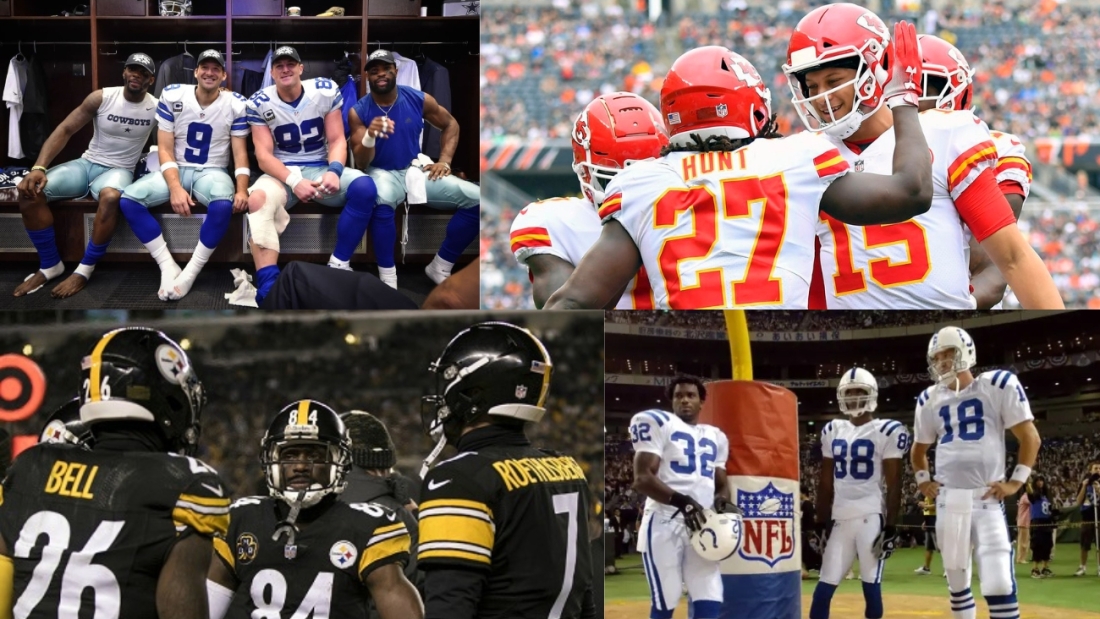
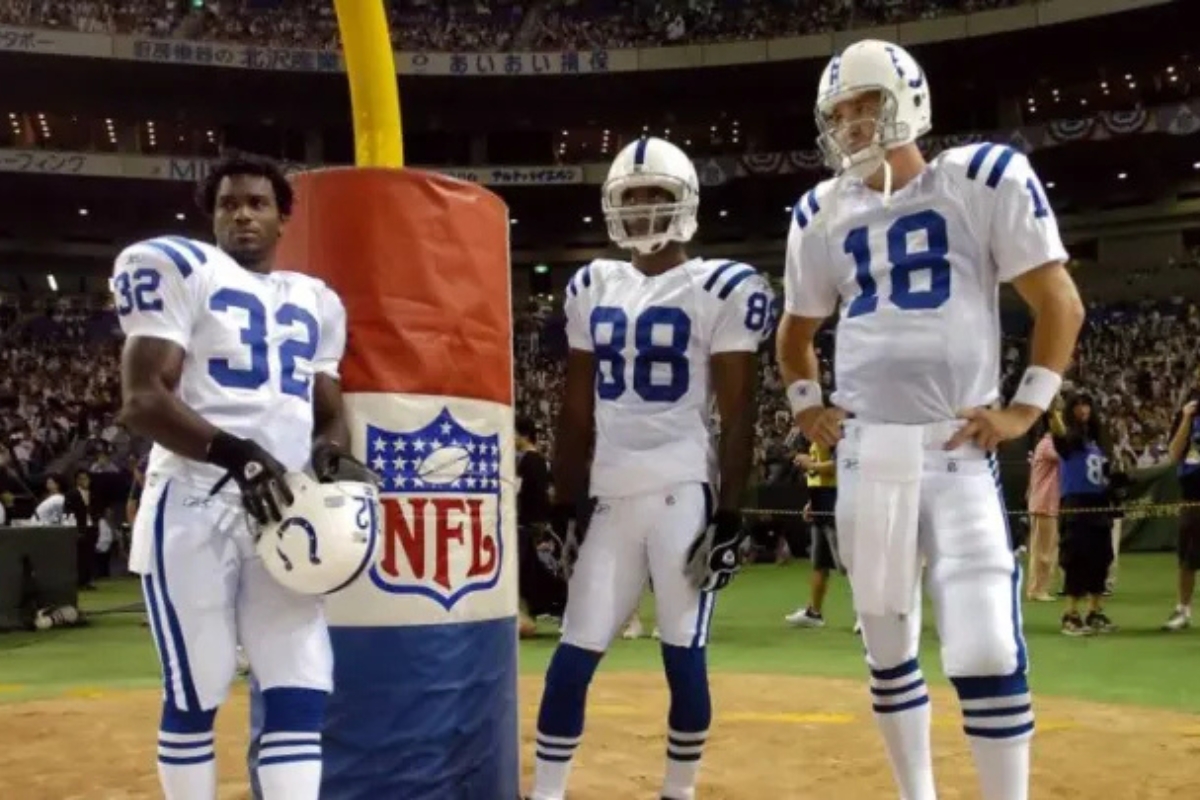
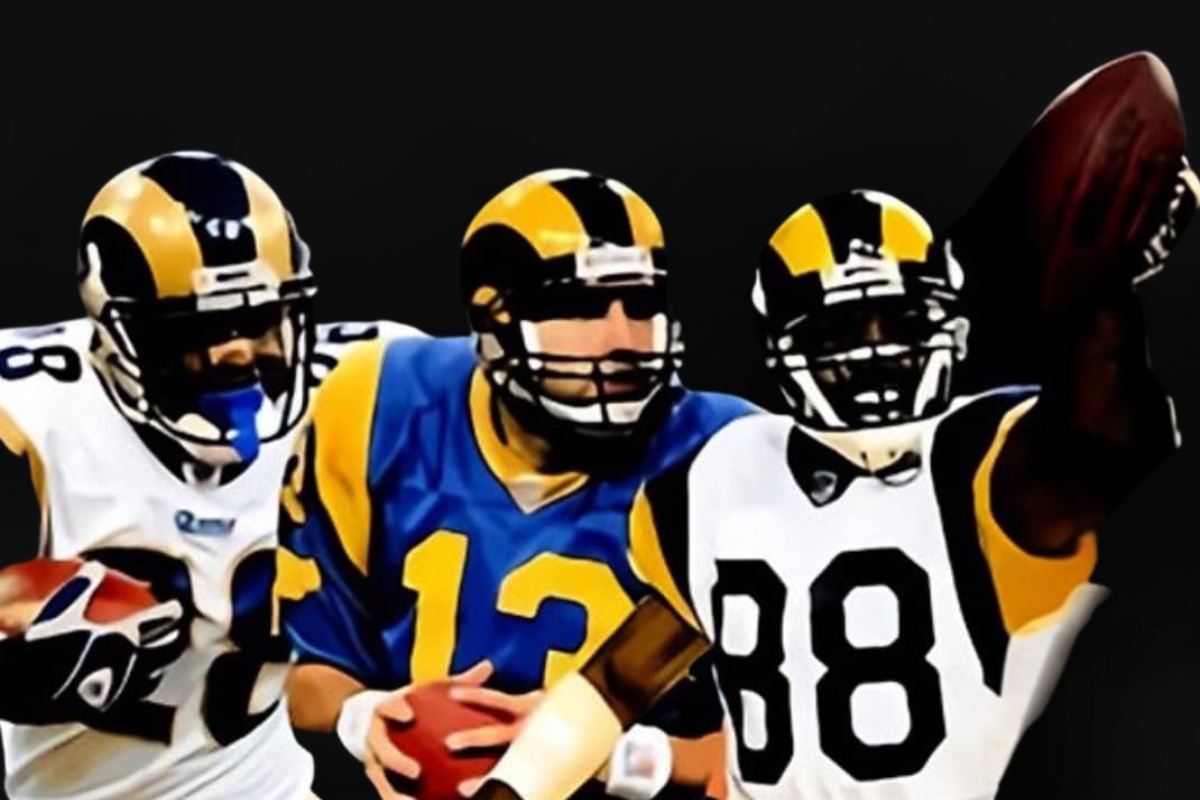
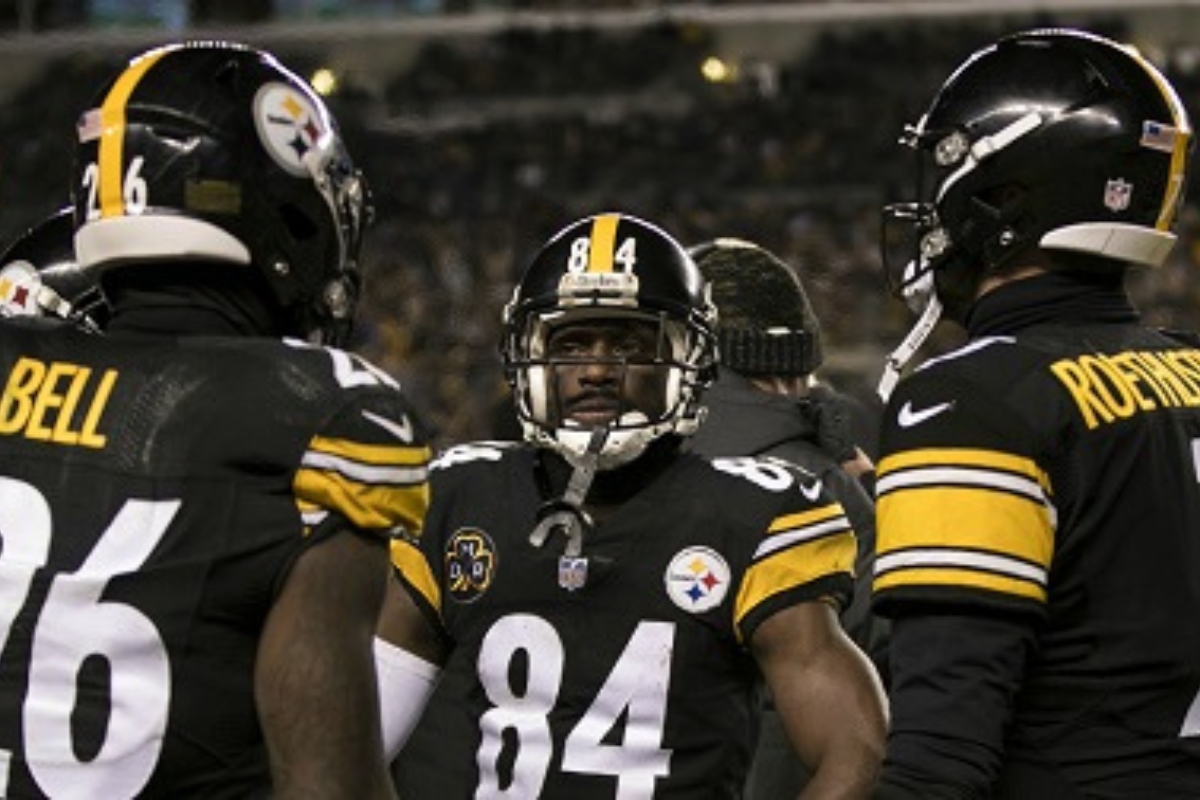
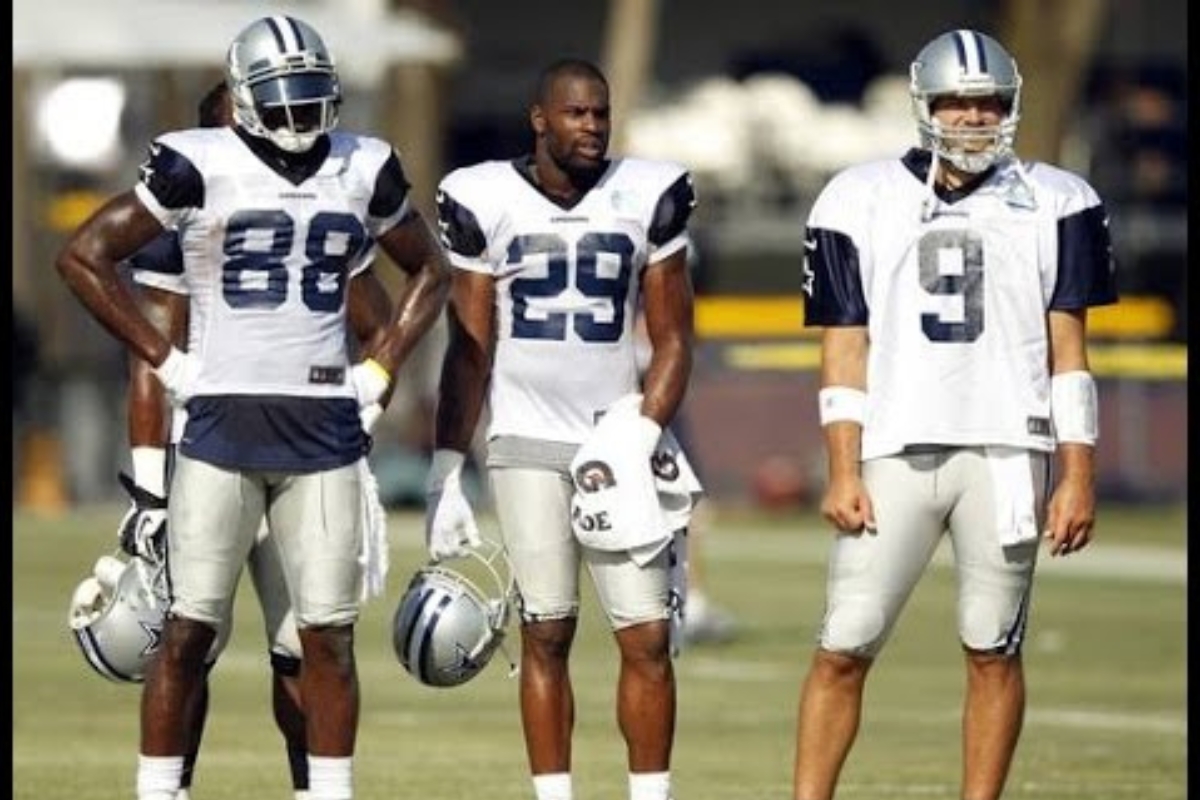
Leave A Comment